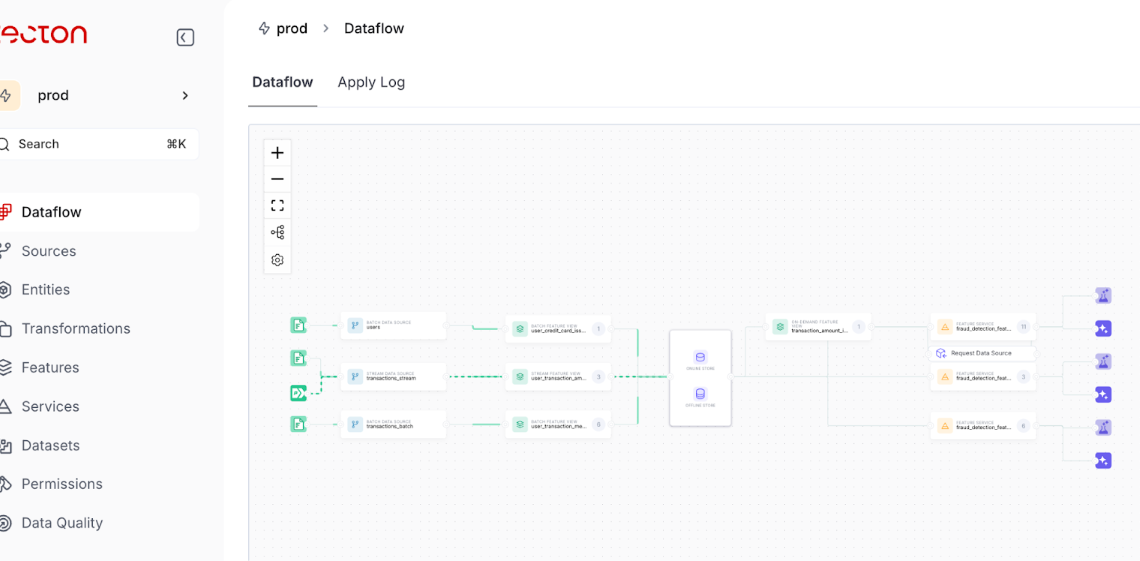Targeting businesses seeking to leverage Generative AI, Tecton has expanded its platform to support the transition from experimental AI projects to reliable, contextually aware applications.
This initiative aims to provide organisations with the required tools to build solid AI systems that effectively utilise real-time data.
Despite the disruptive abilities of Large Language Models (LLMs), many enterprises have limitations when it comes to implementation in production settings. Recent findings by Gartner reveal that only 53% of AI initiatives progress from the prototype phase, pointing to a huge gap in delivering absolute business value.
The limited adoption of LLMs in corporate environments is largely attributed to their unpredictable behaviour in dynamic situations, compounded by their insufficient access to current, domain-specific information. Tecton’s new features aim to address these challenges by integrating detailed, real-time contextual data directly into AI applications, thereby enhancing their reliability.
“The AI industry is at a crossroads. We’ve seen the potential of LLMs, but their adoption in enterprise production environments has been stifled by reliability and trust issues,” says Mike Del Balso, CEO and co-founder of Tecton.
“Our platform expansion represents a paradigm shift in how enterprises can leverage their data to build production AI applications. By focusing on better data rather than bigger models, we’re enabling companies to deploy smarter, more resilient AI applications that are customized to their unique business data and can be trusted in mission-critical scenarios.”
This new approach introduces retrieval-augmented generation (RAG), which blends enterprise-wide data with LLMs, enabling more informed decision-making. For example, an AI system for e-commerce could evaluate customer browsing history, inventory status, and ongoing promotions to deliver highly relevant product recommendations.
Tecton is also rolling out a suite of capabilities that include managed embeddings and scalable integration of real-time data, optimising the way LLMs process and respond to queries.
The managed embedding service will create rich representations of unstructured data, making it easier for AI systems to capture semantic nuances, such as turning a customer review into a vector that highlights opinions and key themes.
Furthermore, the new Feature Retrieval API will allow developers to provide LLMs with engineered features that reflect real-time user behaviour and operational metrics. This enhancement enables applications to deliver tailored responses based on the most current data, thereby improving user experience and operational efficiency.
To simplify development, Tecton has introduced dynamic prompt management, which incorporates version control and standardisation into the AI application development process. This systematic approach to managing prompts will allow for better guidance of LLMs, ensuring they produce accurate and contextually appropriate outputs.
Added to this, Tecton’s updated feature engineering framework enables the extraction of adequate insights from unstructured data, transforming it into structured formats for enhanced machine learning applications.
This ability will support e-commerce firms in automating tasks such as categorising products and deriving sentiment from reviews, further refining customer engagement strategies.
Experts have already begun to recognise the impact of Tecton’s advancements. Joshua Hansen from Atlassian noted the prospect of these tools to create smarter, more efficient AI-driven experiences that enhance collaboration and productivity.
With the launch of these innovative features, Tecton goes beyond seeking to bolster AI performance but also aims to change how businesses approach AI development.
The unified framework enables organisations to seamlessly integrate predictive machine learning and Generative AI functionalities, leveraging their unique data to build advanced applications.
Tecton’s generative AI features are currently available for preview, inviting organisations to explore these innovative tools.







Comments 1